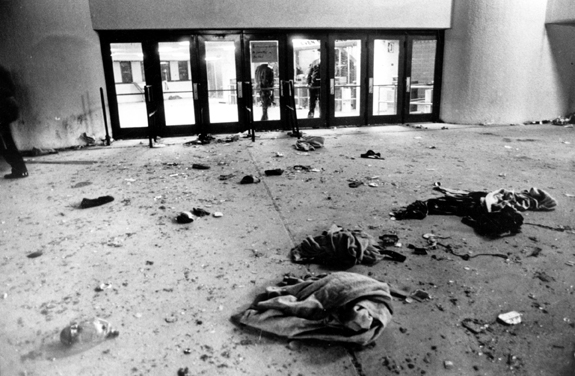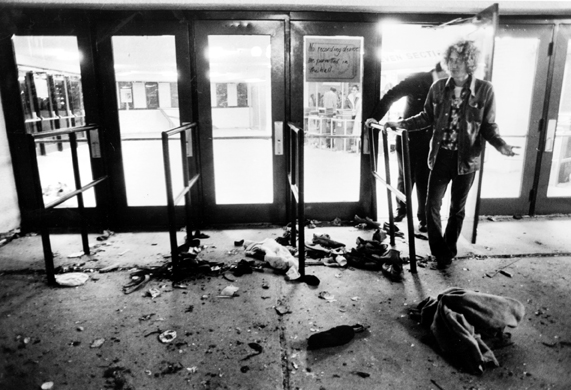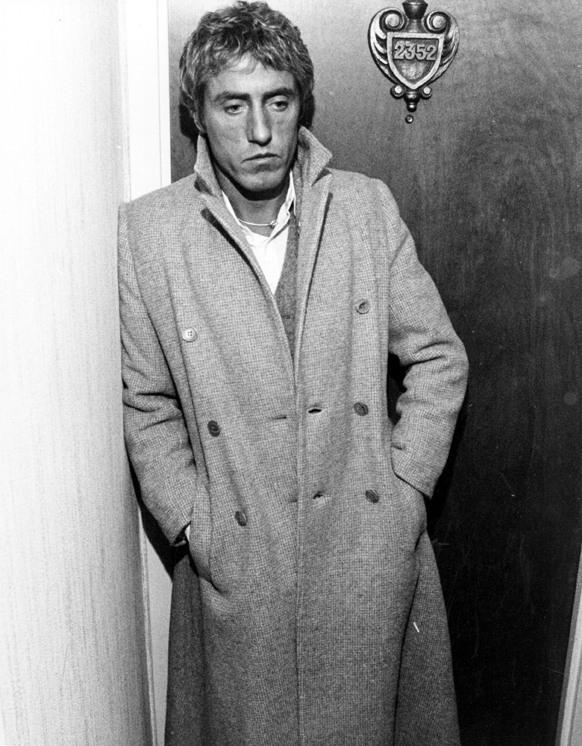By Kevin Grace
This week I’m reading Pete Townshend’s recently published autobiography, Who I Am, and it brought to mind how we document part of his life here in the Archives & Rare Books Library. It was nearly 33 years ago that The Who played Riverfront Coliseum in Cincinnati on December 3, 1979 and eleven people were killed in a stampede for festival seating.
For my generation, Townshend was one of the giants in the music business, a key figure in the history of rock-and-roll with The Who, and today is one of the legendary individuals in the seminal 1960s and ‘70s. The book is quite revealing, and in some sections uncomfortably so, but still an important work in documenting late twentieth-century music culture. Townshend’s childhood was absolutely horrific. He mitigated it as best he could with his talent in music, and one anecdote even struck home a bit. My late father-in-law, William Fenton, was a professor of music and a choral conductor. He once told a story of how, while marching in his high school band, he could suddenly distinguish the sound of every individual instrument being played and that he could bring all those sounds harmoniously together in his mind. He knew then, that music was his destiny. Townshend had a similar experience while playing the harmonica as a teenager. He realized he could hear the individual rhythms and sounds of everything on the street around him and that he could bring it all together with his playing. It was a key moment in his growth into the incredible guitarist he became.
Townshend tracks both his personal and musical life in Who I Am, but really they are inseparable, whether he is writing about his band mates Roger Daltrey, Keith Moon, and John Entwistle, the other British giants like the Stones and the Beatles, or his wife and children. It is a literate, fascinating book from a man who has both skill and experience as a writer and editor.
Of course, one of the sections I flipped to first was his account of that 1979 tragedy, and I was disappointed that it isn’t listed in the index. So, I skimmed through the pages to find it. That Who concert is still one that resonates in Cincinnati history, and one I especially remember because it was only the month before that I had moved back to Cincinnati from Louisiana and began working at UC. I remember the late bulletins on television that night, and all the news in the days that followed.
Here are some excerpts from Townshend’s account, found on pages 322 and 323: “After the show at the Riverfront, we assembled in the band’s dressing room. Bill had terrible news. ‘Something terrible happened out there tonight. Eleven kids have died…it was at the entrances, on the plaza outside.’ ‘Before the show?’ I got to my feet. ‘We decided not to tell you,’ he said. ‘The crowd couldn’t be allowed to leave the building while security was still dealing with the trouble outside.’”
“Back at the hotel we all gathered in a meeting room and watched the television. Some of us were weeping at the images of bodies laid out…We didn’t say much. We had a few drinks, but I was already numb.”
“It turned out that eleven fans were killed (and many more injured) in the rush for seating. The concert was sold out, and when the crowds waiting outside in the cold heard us performing the soundcheck they assumed the concert had started and stampeded. Those at the front were trampled to death by those pushing from behind, who hadn’t realised that the doors were still closed.”
For that concert, there were 3,578 reserved seats and 14,770 general admissions, or festival seating, available on a first-come, first-served basis. Subsequently, Cincinnati City Council would ban festival seating for the next quarter-century. One of the news photographers sent to cover the disaster that night was Jack Klumpe, the chief photographer for the Cincinnati Post. Klumpe worked for the Post for over forty years, covering breaking news, sports, elections, and every other occasion of news interest in Cincinnati. Several years after his retirement from the paper, he donated some of his photos to the Urban Studies Collection in the Archives & Rare Books Library. His images here show the concert tragedy in the hours after rescue workers tended to the injured and dead. In the poignant photograph of Who front man Roger Daltrey, the singer stands outside his hotel room after the devastating news was delivered to the band.
Thirty-three years ago next month.
To read about Townshend, the book is Who I Am: A Memoir. New York, NY: HarpeerCollins, 2012. To learn more about the Archives & Rare Books Library and its holdings, please go to our website, http://www.libraries.uc.edu/libraries/arb/index.html, email us at archives@ucmail.uc.edu, or telephone us at 513.556.1959.



